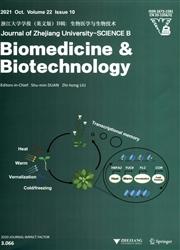Can SpRY recognize any PAM in human cells?
IF 4.7
3区 生物学
Q1 BIOCHEMISTRY & MOLECULAR BIOLOGY
引用次数: 1
Abstract
The application of clustered regularly interspaced short palindromic repeats (CRISPR) and CRISPR-associated proteins (Cas) can be limited due to a lack of compatible protospacer adjacent motif (PAM) sequences in the DNA regions of interest. Recently, SpRY, a variant of Streptococcus pyogenes Cas9 (SpCas9), was reported, which nearly completely fulfils the PAM requirement. Meanwhile, PAMs for SpRY have not been well addressed. In our previous study, we developed the PAM Definition by Observable Sequence Excision (PAM-DOSE) and green fluorescent protein (GFP)-reporter systems to study PAMs in human cells. Herein, we endeavored to identify the PAMs of SpRY with these two methods. The results indicated that 5′-NRN-3′, 5′-NTA-3′, and 5′-NCK-3′ could be considered as canonical PAMs. 5′-NCA-3′ and 5′-NTK-3′ may serve as non-priority PAMs. At the same time, PAM of 5′-NYC-3′ is not recommended for human cells. These findings provide further insights into the application of SpRY for human genome editing.SpRY能识别人类细胞中的PAM吗?
集群规则间隔短回文重复序列(CRISPR)和CRISPR相关蛋白(Cas)的应用可能受到限制,因为在感兴趣的DNA区域缺乏兼容的原间隔邻近基序(PAM)序列。最近报道了化脓性链球菌Cas9 (SpCas9)的一种变异SpRY,它几乎完全满足PAM的要求。与此同时,SpRY的pam还没有得到很好的解决。在我们之前的研究中,我们开发了PAM Definition by Observable Sequence Excision (PAM- dose)和绿色荧光蛋白(GFP)报告系统来研究人类细胞中的PAM。在这里,我们尝试用这两种方法来鉴定SpRY的PAMs。结果表明,5 ' -NRN-3 '、5 ' -NTA-3 '和5 ' -NCK-3 '可以被认为是典型的pam。5 ' -NCA-3 '和5 ' -NTK-3 '可作为非优先pam。同时,5′-NYC-3′的PAM不推荐用于人体细胞。这些发现为SpRY在人类基因组编辑中的应用提供了进一步的见解。
本文章由计算机程序翻译,如有差异,请以英文原文为准。
求助全文
约1分钟内获得全文
求助全文
来源期刊

Journal of Zhejiang University SCIENCE B
生物-生化与分子生物学
CiteScore
8.70
自引率
13.70%
发文量
2125
审稿时长
3.0 months
期刊介绍:
Journal of Zheijang University SCIENCE B - Biomedicine & Biotechnology is an international journal that aims to present the latest development and achievements in scientific research in China and abroad to the world’s scientific community.
JZUS-B covers research in Biomedicine and Biotechnology and Biochemistry and topics related to life science subjects, such as Plant and Animal Sciences, Environment and Resource etc.
 求助内容:
求助内容: 应助结果提醒方式:
应助结果提醒方式:


